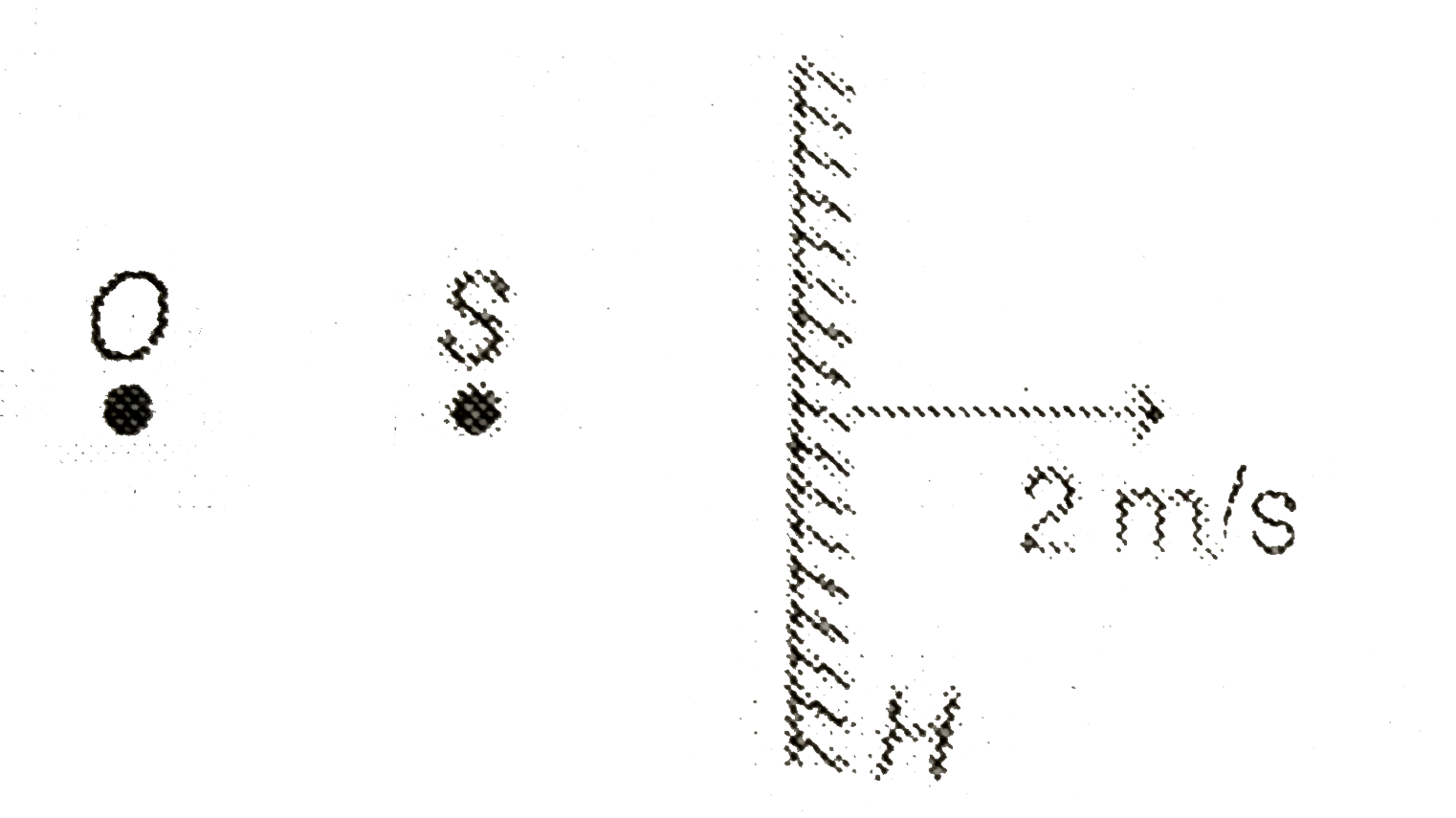An observer moves towards a stationary source of sound with a velocity one-fifth of the velocity of sound. What is the percentage increase in the apparent frequency?
The correct Answer is:B
To solve the problem of finding the percentage increase in the apparent frequency when an observer moves towards a stationary source of sound, we can follow these steps:
1. Identify the given values:
- Let the velocity of sound be v.
- The observer's velocity v0 is given as v5.
- The source's velocity vs is 0 (since it is stationary).
2. Use the Doppler Effect formula:
The formula for the apparent frequency n′ when the observer is moving towards a stationary source is given by:
n′=n⋅v+v0v+vs
Here, n is the original frequency.
3. Substitute the values into the formula:
Since vs=0, the formula simplifies to:
n′=n⋅v+v5v+0
This can be rewritten as:
n′=n⋅v+v5v=n⋅1+151
4. Simplify the expression:
n′=n⋅65
5. Calculate the increase in frequency:
The increase in frequency is given by:
Increase=n′−n=(65n−n)=(65n−55n)=15n
6. Calculate the percentage increase:
The percentage increase in frequency is given by:
Percentage Increase=(Increasen)×100=⎛⎝15nn⎞⎠×100=20%
7. Conclusion:
The percentage increase in the apparent frequency is 20%.
Final Answer:
The percentage increase in the apparent frequency is 20%.
- Let the velocity of sound be v.
- The observer's velocity v0 is given as v5.
- The source's velocity vs is 0 (since it is stationary).
The formula for the apparent frequency n′ when the observer is moving towards a stationary source is given by:
n′=n⋅v+v0v+vs
Here, n is the original frequency.
Since vs=0, the formula simplifies to:
n′=n⋅v+v5v+0
This can be rewritten as:
n′=n⋅v+v5v=n⋅1+151
n′=n⋅65
The increase in frequency is given by:
Increase=n′−n=(65n−n)=(65n−55n)=15n
The percentage increase in frequency is given by:
Percentage Increase=(Increasen)×100=⎛⎝15nn⎞⎠×100=20%
The percentage increase in the apparent frequency is 20%.
The percentage increase in the apparent frequency is 20%.
Topper's Solved these Questions
- BOOK - CENGAGE PHYSICS ENGLISHCHAPTER - SOUND WAVES AND DOPPLER EFFECTEXERCISE - Multiple Correct44videos
SOUND WAVES AND DOPPLER EFFECT
- BOOK - CENGAGE PHYSICS ENGLISHCHAPTER - SOUND WAVES AND DOPPLER EFFECTEXERCISE - Assertion-Reasoning24videos
SOUND WAVES AND DOPPLER EFFECT
- BOOK - CENGAGE PHYSICS ENGLISHCHAPTER - SOUND WAVES AND DOPPLER EFFECTEXERCISE - Subjective56videos
SOUND WAVES AND DOPPLER EFFECT
- BOOK - CENGAGE PHYSICS ENGLISHCHAPTER - RIGID BODY DYNAMICS 2EXERCISE - Interger2videos
RIGID BODY DYNAMICS 2
- BOOK - CENGAGE PHYSICS ENGLISHCHAPTER - SUPERPOSITION AND STANDING WAVESEXERCISE - Comprehension Type5videos
SUPERPOSITION AND STANDING WAVES
Similar Questions
An observer moves towards a stationary source of sound with a speed (15)th of the speed of sound. The wavelength and frequency of the source emitted are λ and f, respectively. The apparent frequency and wavelength recorded by the observer are, respectively.
View Solution(A): When an observer moves towards a stationary source, the frequency of sound heard is greater than the actual frequency
(R) : Apparent frequency increases because the observer intercepts more number of waves when he moves towards the source.View Solution
Knowledge Check
- Question 1 - Select One
An observer moves towards a stationary source of sound. The percentage change in the apparent frequency is
AzeroB0.05C0.1D0.2 - Question 2 - Select One
A sound source is moving towards a stationary observer with 1/10 of the speed of sound. The ratio of apparent to real frequency is
A109B(109)2C(1110)2D1110
An observer is moving towards the stationary source of sound, then
A. Apparent frequency will be less than the real frequency
B. Apparent frequency will be greater than the real frequency
C. Apparent frequency will be equal to real frequency
D. Only the quality of sound will changeView SolutionAn observer approaches towards a stationary source of sound at constant velocity and recedes away at the same speed. The graph of wavelength observed with time is:
View SolutionA source of sound emitting a note of frequency 200 Hz moves towards an observer with a velocity v equal to the velocity of sound. If the observer also moves away from the source with the same velocity v, the apparent frequency heard by the observer is
View SolutionA stationary sound sound 's' of frequency 334 Hz and a stationary ovserver 'O' are placed near a reflecting suface moving away from the source with velocity 2 m/s as shown in the figure. If the velocity of the sound waves is air is v= 330 m/s the apparent frequency of the echo is
 View Solution
View SolutionWhen the observer moves towards the stationary source with velocity, v1, the apparent frequency of emitted note is f1. When the observer moves away from the source with velocity v1, the apparent frequency is f2. If v is the velocity of sound in air and f1f2 = 2,then vv1 = ?
View SolutionWhen source of sound moves towards a stationary observer, the wavelength of sound received by him
View Solution
